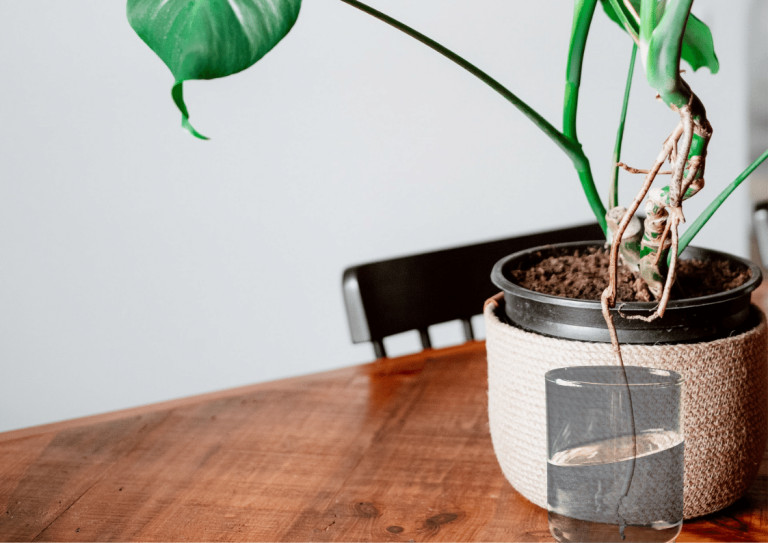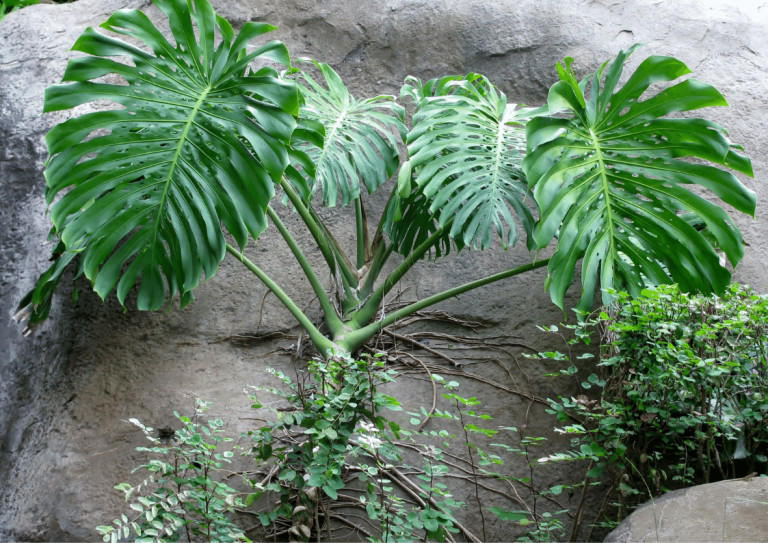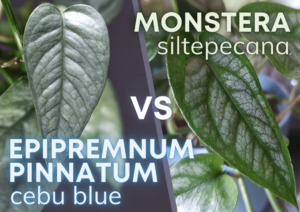Is It OK To Put Monstera Aerial Roots In Water?
- Lakeisha Ethans
- February 5, 2022
If you buy something using the retail links in our articles, sometimes we earn a small affiliate commission. This does not impact the products we recommend.
Aerial roots are common across the climbing Aroids of the plant family Araceae. Monstera plants are a part of this group. This means that, in the wild, the plant climbs its way over taller flora in order to seek sunlight through the thick canopies of various trees.
When you take care of a Monstera plant at home, you’ll likely see a few of these roots sprouting. It can be a little confusing to figure out the best way to handle these sprouting parts. Since they’re roots, some people may think that they belong in water.
There have been differing opinions on whether or not it is safe to place Monstera aerial roots in water. Some people believe that this can facilitate better growth. But as a rule, it’s typically considered best not to put these roots in water, as this can increase the risk of root rot.
There’s some nuance to that concept, of course. In areas of low humidity, you may want to mist roots or water them. Or, if you really know what you’re doing, you can likely get away with periodically submerging aerial roots in water safely, as long as you remove them before too long.
Aerial roots can be a bit of a mystery. They’re not exactly common among other kinds of flora, so it can be difficult to understand what to do with them. In this article, we aim to shed some light on this topic.
Some of the things we’ll cover include:
- Why do Monstera plants grow aerial roots?
- What happens when you put Monstera aerial roots in water?
- What can you do with Monstera aerial roots?
- Can you use aerial roots to train a Monstera?
- What should you do in the event of aerial root rot?
This post explores the various ways to approach aerial roots on Monstera plants, what to expect, and what you can do about them. If you’re keen on having a go at propagating your Monstera check out our ‘how-to’ guide here.

Why do Monstera plants grow aerial roots?
In the wild, aerial roots are central to the survival of a Monstera.
Aerial roots help various climbing plants to anchor themselves to the objects they’re climbing. The roots clasp their chosen surface, serving as sturdy structural support and preventing the Monstera from falling. The roots are not parasitic and will not usually harm what they’re attached to.
But this is not that aerial roots are used for! In the process of climbing, Monstera plants become too separated from the ground. This means that all the nutrients and water present in the soil are harder for them to absorb.
In order to meet this need, the plant sprouts aerial roots. These roots can absorb nutrients and moisture from the air or burrow into the flora around them to harmlessly take some nutrients from them.
Other aerial roots may start to hang downwards instead. These roots burrow into the ground and are converted into partially subterranean roots that help to transport the necessary nutrients up to the climbing plant.
Can you put Monstera aerial roots in water?
For the most part, you should not put Monstera aerial roots in water. While it’s true that they can absorb moisture, they’re not typically designed to be constantly submerged.
When you put these roots in water, you increase the risk of damaging your plant. The aerial roots may begin to rot.
This can even indirectly harm subterranean roots by causing overwatering. When aerial roots have such direct access to constant water, a Monstera begins to rely on them as its chief source of moisture. This causes subterranean roots to grow less and they won’t sink deep enough into the soil.
When that happens, the subterranean roots aren’t able to absorb moisture from the soil that comes from normally recommended watering. The soil stays wet for too long, which can rot those ground roots!
If you’ve been looking online, you might have seen some people claim that putting aerial roots in water increases growth. There is no scientific evidence of this and this is likely a result of correlation, not causation.
Some people do decide to place their aerial roots in water, anyway. But this is a very delicate balance and can be difficult to manage. The risk of rot is simply a little too high to make this process worth it.
The fact is that you don’t need to water aerial roots at all. You don’t even need to mist them! Simply put, leave those roots out in the open air for best results!
Our Favorite Monstera Plants And Supplies On Etsy
What can you do with Monstera aerial roots?
You can just leave Monstera aerial roots alone. They won’t damage your home’s structure, even if they climb on walls, so there’s no harm in letting them be.
Ultimately, the only reason to want to better manage aerial roots is for aesthetic purposes. They can get so long that they render parts of a room inaccessible, or you might just find them unsightly.
If that’s the case, you can cut these roots off. Trimming may promote further branching of the root, so if you want to completely remove them, cut as close to the stem as you can.
Cutting aerial roots doesn’t harm your Monstera plant at all. If you’re worried about infections of your plant at the site of the “wound”, sterilize the cutting tool you use with rubbing alcohol or hydrogen peroxide first.
Tip! You may also choose to try and place the aerial roots in soil. If the plant is small enough, you can burrow the roots into the original pot, or you can place the roots in individual small pots of soil. This is said to help improve nutrient absorption, but it's not really necessary and results will be minimal. This can also make further repotting efforts more difficult, so be warned!
Can you use aerial roots to train a Monstera?
Since Monstera aerial roots grasp onto trees in the wild, you might wonder if you can utilize these supportive properties to your advantage.
This isn’t necessary, but for those who want neater plants that grow in a certain direction, it can be done.
Take a pole, preferably a moss pole, and use something to tie the Monstera stems to the pole. You can do this with a simple twist tie or other similar, non-obstructive item.
Doing this will encourage your Monstera to grow in the way that you want. It also allows the aerial roots to train themselves and get organized, climbing around the pole and latching onto it for support. When you use a moss pole, you’ll even get to see the aerial roots slowly growing into the moss to take nutrients from it.

What should you do in the event of aerial root rot?
Let’s say you’ve already been overwatering your Monstera or have submerged its aerial roots in water. This may mean that you have a bad case of rot on the horizon. Rotting roots will start to turn black or brownish, may develop spots and lesions, and will feel mushy to the touch.
In order to handle aerial root rot, you need to remove those rotting roots completely. But first, you must begin by ensuring perfect hygiene and sanitation before you can begin the process!
Start by washing your hands thoroughly, then open a window or similar opening to improve ventilation. Then, sanitize the tools you will be using, such as your pruning shears. Use the tool to cut the root as close to the stem as possible. Finally, apply fungicide to reduce the risk of recurrence.
While root rot is commonly caused by excessive water exposure, it can also be a result of overly high humidity, bad circulation of air, and various contamination issues. You can prevent this in the future by reducing the frequency of watering, washing your hands before handling the plant, and watering during the daytime only.
Take home message
Monstera aerial roots should not be put in water under most circumstances, as doing so can put the plant in danger of root rot. If you absolutely need to, you can try burrowing the roots into the soil or cutting them off, but for the most part, they can be left entirely alone.

Lakeisha Ethans
Houseplant Writer
Mother to two humans and hundreds of plant babies. Lakeisha uses her 15 years of experience as a content writer to specialise in simplifying what you need to know to grow and care for all indoor plants.
Similar Posts
Monstera Leaves Yellowing After Repotting: Causes and Solutions
Yellowing leaves may be a sign that your Monstera is experiencing shock or stress, but is this caused by overwatering, underwatering or nutrient deficiencies?
Monstera Siltepecana vs Epipremnum Pinnatum Cebu Blue: Key Differences Explained
Are you struggling to tell the difference between Monstera Siltepecana and Epipremnum Pinnatum Cebu Blue? This article will help you identify and care for these two popular houseplants.



